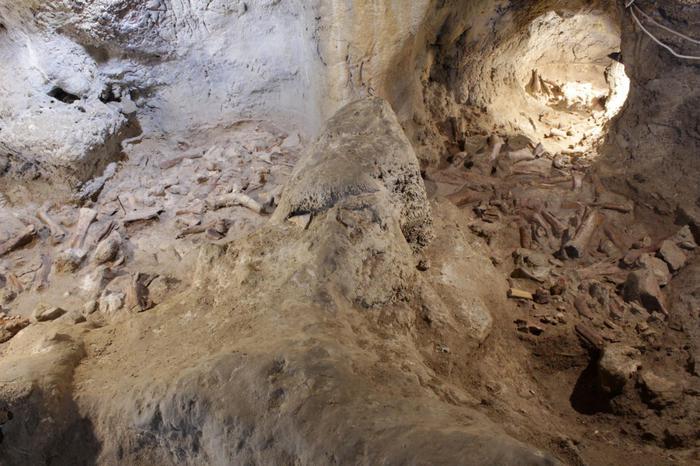Hominids seeking shelter in a cave to warm up, sleep, defend themselves from the ambush of the beasts, sharpen the weapons with which they will return to hunt.
But also very ferocious hyenas that, at different times, have made a den of that same natural cave where they can carry their bloody trophies.
The archaeologists, paleontologists, anthropologists, archaeobotanists who have been working in the Guattari al Circeo cave (Lt) in a new excavation campaign conducted by the archaeological superintendency of the provinces of Latina are doing a journey through time over 100,000 years. and Frosinone in collaboration with the University of Tor Vergata.
THE GUTTARI CAVE AND THE ENIGMA OF THE OPEN CRANI
A dive into a very distant past in which this strip of territory was inhabited by Neanderthals, the elder and then mysteriously extinct 'cousins' of homo sapiens, and where beaches and cultivated lands are now found, they extended as far as possible eye green grasslands. But also from ferocious animals, hyenas, rhinos, cave bears. Very large specimens such as the disproportionate megalocervo or as ancient as the aurochs, a breed of bovine that was then extinct.
A delicate investigation carried out in what for 80 years has been considered one of the most important sites of the Middle Paleolithic.
And that today is enriched with a new exceptional find with the recomposed remains of 9 Neanderthal individuals and an incredible number of precious fossils, animals and plants.
"An extraordinary discovery", the Minister of Culture Franceschini applauds,
underlining the work of the superintendency.
The Circeo as it was, 9 Neanderthal men discovered
In fact, explain the experts who have been working for months among the rocks and bones scattered in this underground world a stone's throw from the sea that belonged to the sorceress Circe, a sort of huge database that will be very useful for reconstructing history, but also the ecosystem of these lands in a very distant period of time, even difficult for the layman to imagine, ranging from 125,000 to 50,000 years ago. Discovered by chance in 1939, the Guattari Cave, studied at the time by the paleontologist Alberto Carlo Blanc, owes its exceptionality to a collapse that about 60 thousand years ago buried it, sealing its opening and ensuring that everything remained as it is. it was basically a kind of time capsule.
Precisely for this reason and for the discovery at the time of an extraordinarily well preserved skull cap, it was immediately counted among the most important sites in the world for the study of Neanderthal man. The new intervention, made with the help of technologies and skills that were not even imaginable 80 years ago and extended to an area of the cave that had never even been investigated by Blanc, now opens scenarios of enormous interest for research, explains Francesco. Di Mario, the archaeologist official of the superintendency who directs the excavation. The reconstructed human skeletons, he says, "all belong to adult individuals, except perhaps only one that could be a young man". Among them only one female. But these are not all people who lived in the same era:the closest to us would have lived between 50,000 and 68,000 years ago, the oldest even between 100,000 and 90,000 years ago. Now all this material will have to be studied, points out the director of the anthropology service of Sabab Lazio Mario Rubini, but already from the first investigations a lot of information has arrived, "an analysis on the tartar of the teeth - he anticipates - showed for example that their diet was very varied, they ate many vegetarian cereal products, fruit of the harvest, and it is known how much good nutrition is essential for the development of the brain ". In fact, with the new findings, Rubini reiterates, the Circeo site becomes "comparable in importance to that of El Sidron in Spain or that of Krapina in the former Yugoslavia.The incredible thing at the moment is that it has given us back many individuals, so many as to shed an important light on the history of the population of Italy ".
And the hope now is that by studying this immense amount of material we can solve the many mysteries that surround this species. One in particular, linked to the Lazio cave, where all the skulls found have a large opening at the base, as if someone had opened them on purpose to eat the brain. In the past, the anthropologist recalls, "the hypothesis of a cerebrophagy ritual had been advanced", but the question is still open, he says, "it may have been the man who opened the foramen magnum and the hyena ended nibble on it, it could have been the hyena itself who opened it, and it could simply be a break due to chance. " It is one of the puzzles, perhaps one of the most disturbing, that the work of the next few months may be able to unravel.

